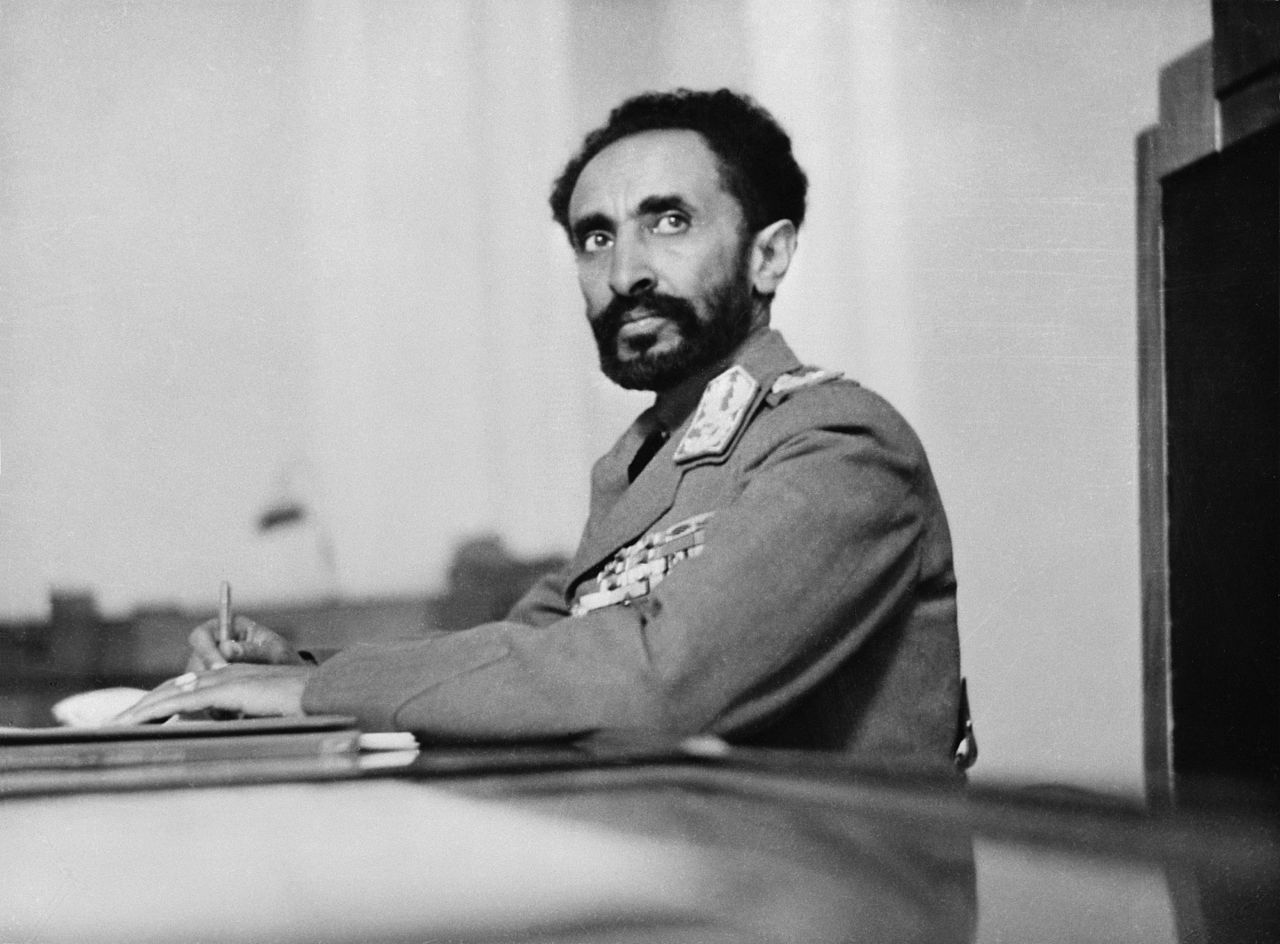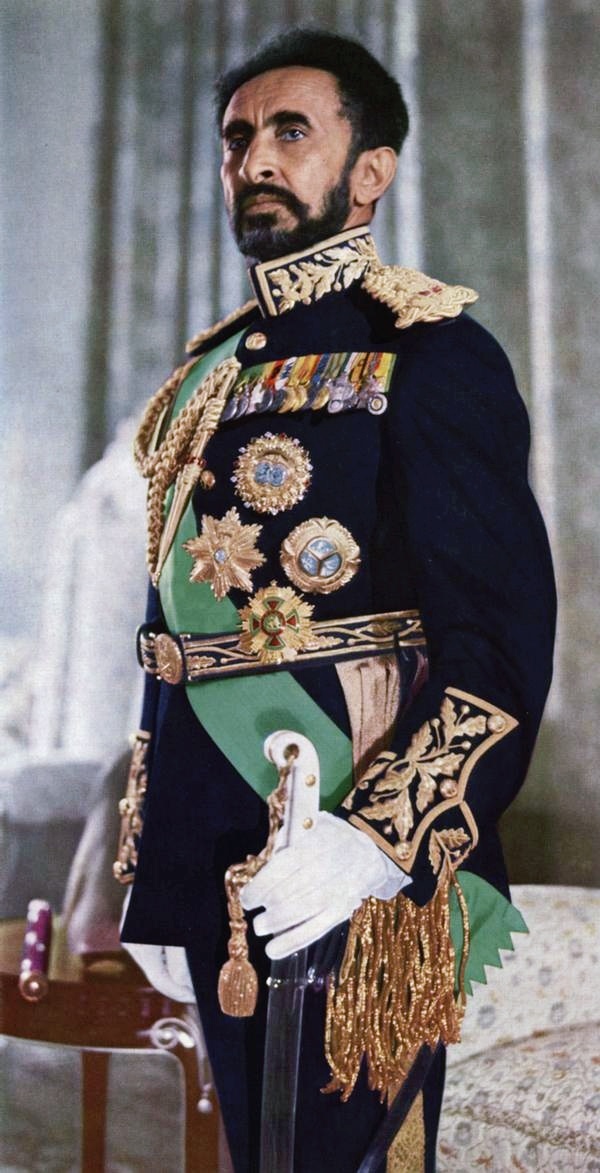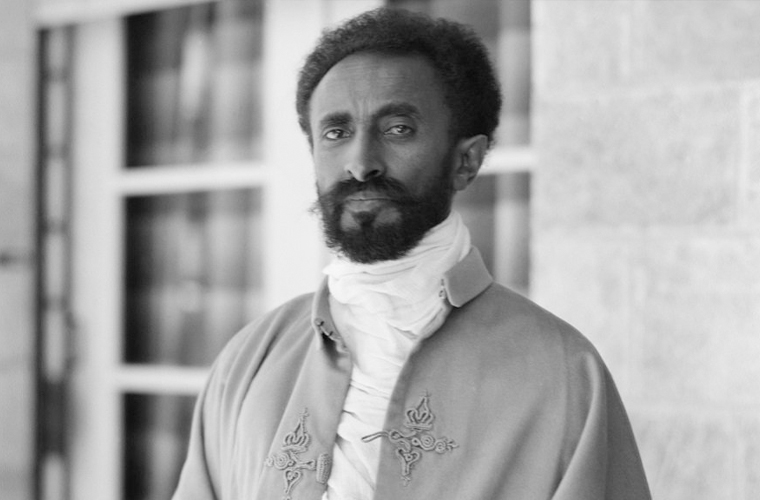On July 23, 1892, a child was born in a village in eastern Ethiopia. He was named Lij Tafari in Amharic, which translates to mean a child of royal birth who is respected or feared (dreaded).
As a regent in the Ethiopian government, he took on the title Ras, meaning prince or chief. When he has crowned Emperor in 1930, he received another new name, this time a royal one: Haile Selassie, meaning “Power of the Trinity.”
His coronation also gave rise to a new spiritual movement symbolized by his birth name, which began in Jamaica but is now practiced all over the globe. Many people call it “Rastafarianism”; however, the followers of the movement typically call themselves “Rastafari” or simply “Rasta.”
On this, the 127th anniversary of his birthday, let’s take a look at why His Imperial Majesty (H.I.M.) is beloved by Rastas everywhere.

The Prophecies“Ethiopia shall soon stretch forth her hands unto God.” Psalm 68:31 Johns Hopkins University professor and Rastafari scholar Robbie Shilliam says, “For Rastafari, this Biblical prophesy was given urgency by UNIA founder Marcus Garvey’s early-twentieth-century call for African redemption. It became manifest with the coronation in 1930 of Ras Tafari as Haile Selassie I, Emperor of Ethiopia.”In a Jamaican church in 1920, Garvey is said to have uttered the often-quoted words, “Look to Africa when a black king shall be crowned, for the day of deliverance is at hand.” For this reason, many Rastas consider Garvey to be a prophet akin to John the Baptist because his words were fulfilled ten years later with the coronation of Haile Selassie. Kristoff Swaby, a Rastaman from Spanish Town, Jamaica, put it this way: “At a time where Africans and our history were being oppressed and suppressed…this man Garvey…said many things like if the Europeans and Asians have their Almighty, let them have it, but we as black folks need to see the Almighty through our own spectacles.”It is not as well known that Garvey expressed deep disappointment and strong condemnation of Selassie’s rule, particularly during the Italian occupation of Ethiopia. Garvey also took H.I.M. to task for the continuation of slavery in Ethiopia and for the nature of his relationships with European leaders. Nonetheless, both men are held in high esteem by Rasta men, women, and children around the globe.
The Land
The veneration of Selassie is closely connected with the Rasta ideology that considers Ethiopia to be Zion: the promised land for Black people. Ethiopia, under its ancient name Kush, is the first identifiable country to be named in the Judeo-Christian Bible. It is also one of the most frequently mentioned countries throughout the Bible and was home to the first non-Jewish convert to Christianity in the book of Acts.
Whereas enslavement and European colonization brought many people of African descent into the Christian faith, Ethiopia stands apart for maintaining its own form of religion since the 4th century, totally separate from Roman Catholic or Protestant history. It is known as the Ethiopian Orthodox Tewahedo Church and even has a separate version of the Bible that contains 81 books compared to the 66 in the Protestant Christian version or the 73 in the Roman Catholic.
Furthermore, it is the only nation in Africa that was not colonized by a European country; in fact, the Ethiopians beat the Italian army at the end of the 19th century. The five-year occupation by Italy during Selassie’s reign, which led to his self-imposed exile in Europe and famous address before the League of Nations, is not considered by most to be true colonization on par with the British, French, and other European powers’ control of the rest of the continent. Ethiopia also had demonstrated a willingness to recognize strong female leaders including Selassie’s predecessor, Empress Zewditu, and his wife Empress Menen. These unique characteristics strengthened the case for Ethiopia as a sacred place for Rastas, with the Black king Selassie solidifying this belief through his actions.

The Person Haile Selassie’s connection to the throne stems from his father’s mother, who was the aunt of Emperor Menelik II, and the daughter of another ruler who claimed descent through the Solomonic dynasty. A sacred text called the Kebra Nagast or “The Glory of Kings” includes the account of an Ethiopian lineage from Solomon through Menelik, his son by the Queen of Sheba. Selassie is also linked to this line, which stems from the Israelite king, David. For some, this gives Selassie the birthright needed to establish him as a promised Messiah who would be the root of David. Adding to his regard as a prophetic figure is Selassie’s full title: the Conquering Lion of the Tribe of Judah, King of Kings of Ethiopia, Elect of God, echoing the appellations of the Christ in the book of Revelations.
Besides his heritage, Selassie’s actions have inspired many Rastas through the years, from the speech at the League of Nations which later became the basis for Bob Marley’s hit song, “War” to his involvement in creating the Organization for African Unity. Empress Renee, an American-born Ghanaian repatriate who shares a birthday with Selassie, says “I for one see H.I.M. as an example to overcome all obstacles and defeat the wicked as he did against Italy!”

Selassie showed special favor to the Rasta community in 1948 when he set aside land at Shashamane for Rastas and others in the Diaspora to repatriate. He visited their settlement several times until the coup that ended his reign and drastically reduced the land granted to these repatriates. The story is well known how the Jamaican Rasta community turned out in full force when Selassie visited their country in April 1966. His visit became enshrined as Grounation, an annual holy day for Rastas everywhere.
Selassie’s reign is not without its critics, nor are his followers who are widely associated with marijuana and reggae (but not as much with a healthy lifestyle and resistance to oppression). Yet today, his statue stands outside the African Union headquarters, demonstrating that his legacy is not limited to his Rasta adherents by any means, and a smaller version of the settlement H.I.M. created at Shashamane still exists today.
It must be noted that Selassie (and Garvey, for that matter) was a devout Christian for his entire life. He never professed to be a Rasta nor to be a God. To be completely honest, it must also be noted that Jesus, the Christ of the New Testament, never professed to be a Christian — he practiced the Israelite faith up to the crucifixion — and whether He claimed to be God or part of a Trinity has been debated all the way to dividing denominations.
Likewise, there are today several sects among the Rastas, with differing views about the divinity of Haile Selassie. Swaby sums it up by stating:
“Seeing Selassie as a God is up to the individual. Some consider him like god, some say burn god, some say Selassie is Selassie. It is just up to how the individual understands it in his headspace. Nothing is written in stone.
But if you ask who is the king, you will always get the same answer. Selassie to Rastafarians is like a beacon of confidence. So this black man can be king, so can I. And his empress, the same to black women.”

